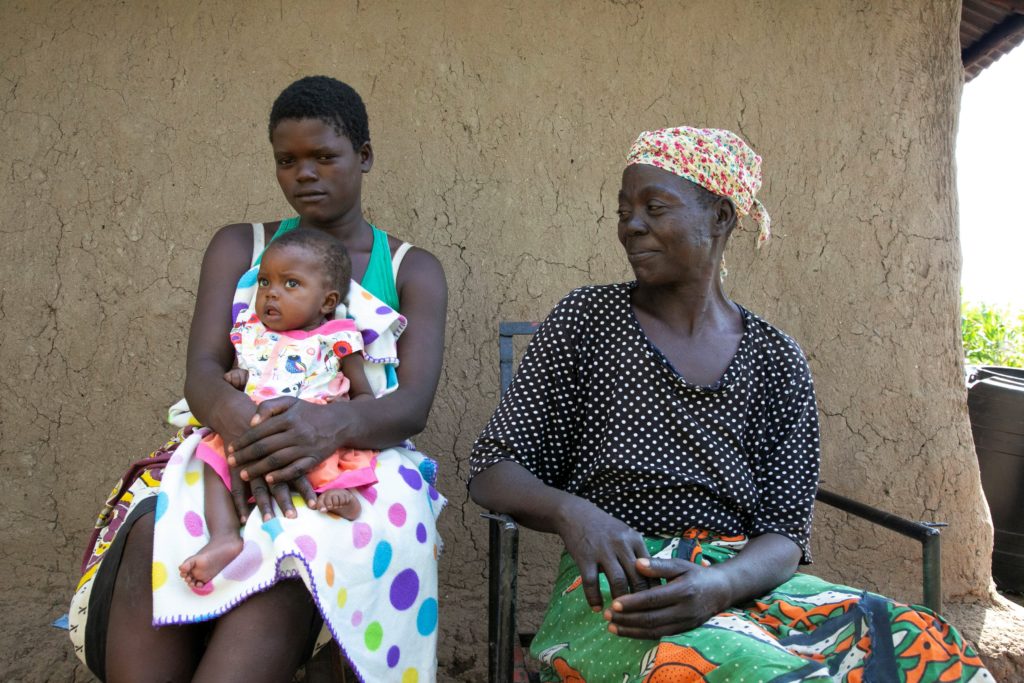AIDSFree Helps Young Kenyan Mothers—and Their Communities—Take Pride in Parenthood
April 12th, 2019 | viewpoint
Girls in sub-Saharan Africa are caught in a trap. One in five will become pregnant by age 18, and needs education and employment to care for her baby and to thrive into adulthood. But many of these girls drop out of school and do not receive sufficient prenatal care, putting them and their babies at risk and preventing them from accessing HIV testing and treatment. In many cases, the stigma of being young and pregnant—and often unmarried—places an enormous burden on girls. Stigma and shame are compounded in girls who are pressured or physically forced into sex, which is about one in three in Kenya. Together, these stressors have long-term detrimental effects on the mother’s and baby’s health.
The Strengthening High Impact Interventions for an AIDS-free Generation (AIDSFree) project, implemented by JSI Research & Training Institute, Inc. (JSI) and the Elizabeth Glaser Pediatric AIDS Foundation, designed a program to help pregnant girls, adolescent mothers, and their babies overcome these barriers. “We looked at home visiting programs, but none were designed specifically to meet the needs of pregnant girls and young mothers,” explains Marcy Levy, JSI senior technical advisor on AIDSFree. “We triangulated the challenges that adolescent girls and young mothers face with the data on successful home visiting programs.”
The research showed rampant stigma and discrimination against pregnant adolescents and young mothers. “It became clear that to change outcomes for these adolescents and their children, we needed to remove the stigma and discrimination that impeded their access to health and social services,” says Levy. This starts with changing the attitudes of the people who are supposed to provide physical, financial, and emotional support—such as family members, school officials, and health facility staff—to adolescents.

In response, AIDSFree developed the Jivunia Uzazi na Afya (“take pride in parenthood and health”), or JUA program, which takes a team-oriented case management approach to home visiting. While most home visiting programs use a peer mentor to talk to adolescents, AIDSFree created a home visiting team (HVT) model that uses peer mentors as well as adults—both male and female—who work with caregivers and other family and community members in the client’s life.
JUA program HVTs make regular home visits to address the specific needs, barriers, and opportunities facing their young clients. HVT members also talk with caregivers about their feelings of discomfort with girls’ pregnancy and try to shift their attitudes, and suggest positive ways they can support the adolescent and her child. HVTs also help girls keep clinic appointments; ensure plans for a skilled delivery; and screen and refer for post-partum depression. HVTs work with school administration to girls to continue or resume their education, and with health facilities to minimize staff discriminatory actions and attitudes. After delivery, HVTs help girls identify childcare so she can resume school and work.
Since January 2018, the JUA program has enrolled 387 vulnerable girls in western Kenya and Nairobi’s informal urban settlements. HVTs have made more than 2,000 home visits, and over 80% of enrolled households are now considered supportive of the adolescent and her pregnancy or child—up from just half of households at program start. The JUA program has eliminated mother-to-child transmission of HIV among beneficiaries, and 94% of girls who gave birth did so with the support of a skilled birth attendant. The program has also improved school enrollment and retention for these girls.

JUA’s adolescent clients, families, and communities readily acknowledge the success of the program. “We’ve heard an extraordinary amount of feedback from adolescents and their families, schools, health facilities, communities, and local government officials that this is not only a unique approach; it’s one that actually works,” says Levy.
The achievements of the JUA program demonstrate how important it is to consider a girls’ entire environment when supporting her through her pregnancy and early motherhood. The JUA program has shown that even more than a village, it often takes a caring, well-trained team working with families and communities to raise these girls and their infants up.
Written by Alexandra Coombs, Jennifer Pearson, and Julie Ray
We strive to build lasting relationships to produce better health outcomes for all.